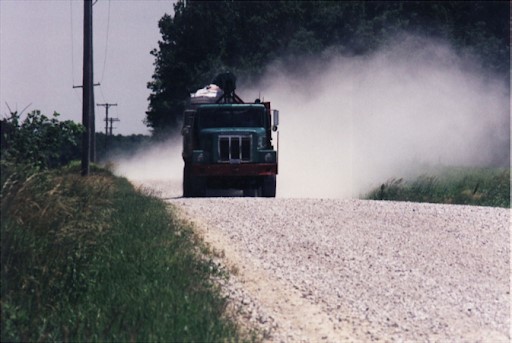If you run a construction, civil, or mining company, then you understand that road maintenance is one of the hardest tasks. Vehicles that are subjected to moving along unpaved roads are more susceptible to becoming damaged. Therefore, it is crucial to maintain the roads at your worksite in good condition to cut on potentially expensive repair costs. It is, consequently, diligent in implementing dust control and road maintenance to help you protect your fleet as well ad increase the site’s efficiency. Using dust control systems on the unsealed roads will be beneficial because the vehicles and trucks will not need to work harder to get to the destinations. These techniques will also ensure that these same vehicles are not contributing to dust production at the worksite. Here are some of these strategies. 1. Reduce traffic When vehicles use an unpaved road, they stir up dirt. Therefore if there is high vehicle traffic on these roads, it is bound to increase the level of dust production. Similarly, when the traffic is reduced dust production will decrease. You can achieve that by imposing a limit on the number of vehicles allowed to use the unpaved road or restricting the weight of the cars using the unpaved roads. 2. Palliative 3 (Binding particles together) This kind of Innovative surface solutions Involves using dust palliatives. The palliatives in this technique include chemicals that bind fine dust particles onto each other or larger particles. The chemicals comprise of different groups. There are petroleum-based, electrochemical stabilizers, synthetic polymers, as well as organic non-petroleum chemicals. Petroleum-based binders thinly coat the particles with asphalt causing an increase in particulate mass, therefore decreasing any chances of these particles becoming airborne. They include cutback asphalt, Bunker C, and emulsified asphalt. Electrochemical stabilizers, on the other hand, neutralize soil particles, therefore, preventing them from attracting water and, instead, bonding together. These stabilizers are worked into the surface using equipment; and include ionic stabilizers, bentonite, and sulfonated petroleum. Synthetic polymers bind the soil together, therefore, forming a semi-rigid layer on the road. They are applied in liquid form and need time to dry up undisturbed. An example is polyvinyl acrylics. Organic non-petroleum suppressants are water-soluble and include resins. 3. Imposing low-speed limits Dust production increases with speed, hence when vehicles are moving at high speed, they stir up more dust. By putting up signs and enforcing these speed limits, you can significantly reduce the level of dust production. Setting up bumps and drainage channels along the unpaved road will also help slow down the vehicles. However, for these speed limits to work, members of the surrounding community need to agree on and follow them. Proper drainage channels will also play a significant role in reducing dust. Proper drainage ensures that once it rains, water doesn’t stagnate on the road; and cause accumulation of displaced soil along the sides of the road. Poor drainage causes and an urgent need for resurfacing, due to dust production once the water dries up as well as numerous potholes. 4. Reducing the exposed ground When the ground is covered with vegetation, very little dust is not produced and blown up. Any footpath or dirt parking lot is a source of dust. The more they are at the worksite, the worse the dust-issue becomes. Therefore to minimize dust, maintain the natural vegetation at the worksite, and ensure that vehicles are only being driven along designated trails. This dust control strategy is effective because apart from plants covering the ground, their roots also hold the soil particles in place. 5. Slowing down the wind Having windbreaks will help ease dust production in your area. Effective barriers break the forward movement of wind and redirect the flow without generating excess wind eddies. The windbreaks also slow down the wind. Examples of windbreaks are snow fences and rows of plants. To ensure that you are getting the best results, purchase windbreaks that are designed for particular wind directions. 6. Sealing unsealed roads with impermeable material Although it is the most expensive technique, paving is undoubtedly the best way to control dust on unpaved roads. There is a wide range of effective and durable surfaces in the market to choose from. These impermeable surfaces prevent any soil surfaces from breaking down and producing dust. This paving method is especially helpful on busy roads that are used by hundreds of vehicles on a daily basis. Chip seals are another kind of impermeable material that can be used on unsealed roads, although they are not as effective as paving. Finally, fiberglass can be used to seal the roads and trails of oilfields in a cold climate. They provide a useful temporary solution. These fiberglass interlocking plates can support huge loads for short distances without the need for structural roadbeds. They also have a long lifespan. These are some of the most effective techniques to manage dust production at your worksite. The cost of each technique varies, therefore you can solve your dust problem using a technique that suits your budget and needs.









